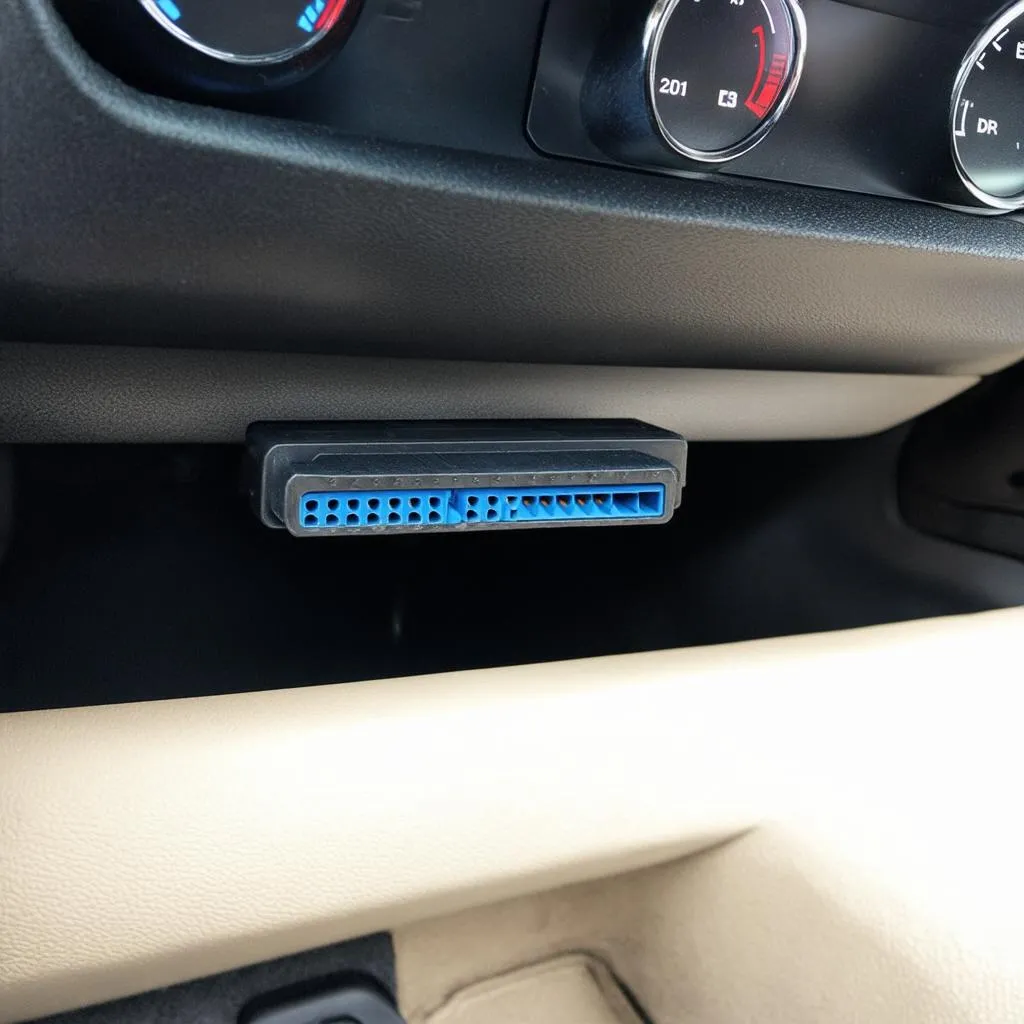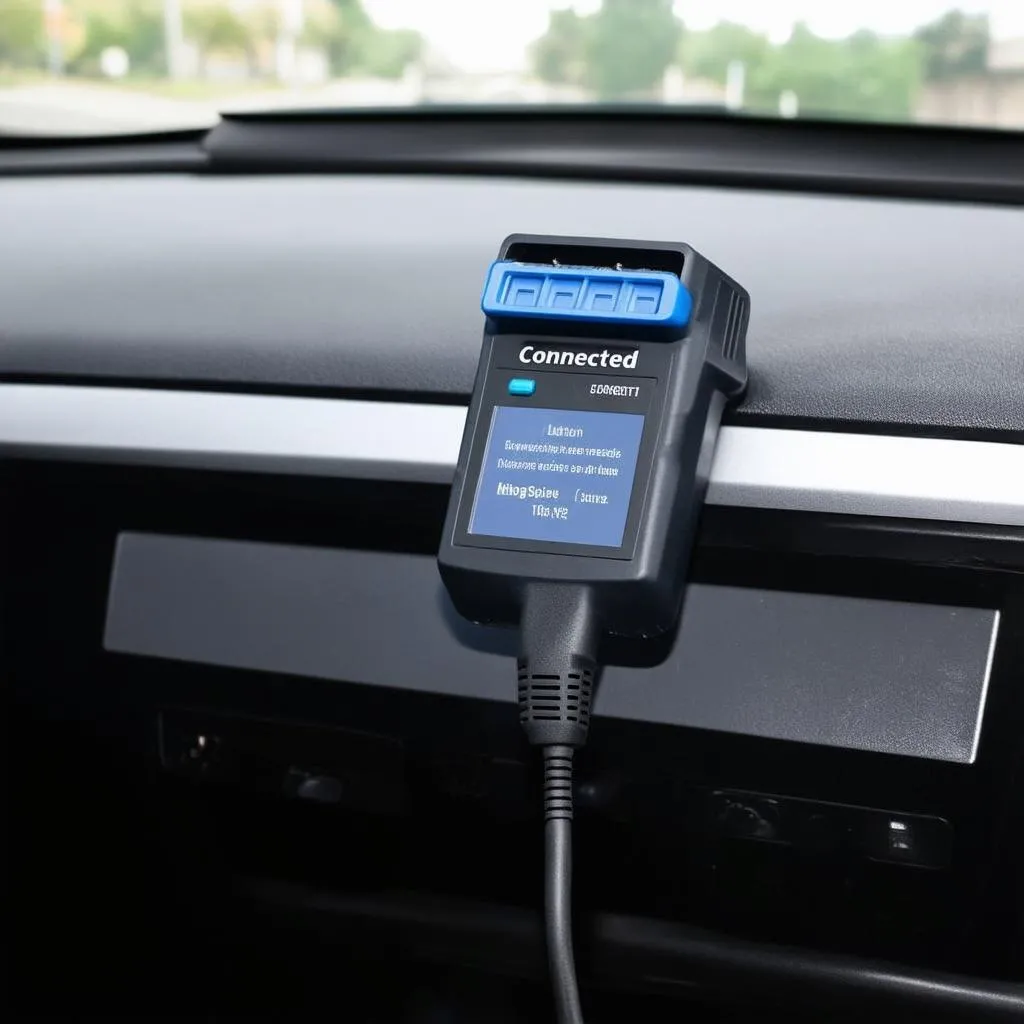Have you ever stared at your car’s dashboard warning light, feeling a sense of dread wash over you? That little light is like a modern-day check engine light, and it often means a trip to the mechanic and a hefty bill. But what if you could understand what your car is trying to tell you? That’s where your OBD port comes in.
The OBD port, or On-Board Diagnostics port, is like a window into your car’s soul (or at least, its computer). Learning how to test your OBD port can save you time, money, and unnecessary worry. It’s like having a direct line to your car’s inner thoughts.
This comprehensive guide will walk you through everything you need to know about testing your OBD port, from understanding its purpose to troubleshooting common issues. Let’s dive in!
What is an OBD Port and Why Should I Care?
Imagine this: you’re driving down a scenic highway, enjoying the open road, when suddenly, your car starts sputtering. You pull over, completely clueless about what’s wrong. In the past, you would have been at the mercy of a mechanic and their diagnosis.
Thankfully, those days are long gone. Your car’s OBD port is a standardized 16-pin connector, usually located under the driver’s side dashboard. It gives you access to your vehicle’s computer system and a wealth of diagnostic information.
Why should you care about testing your OBD port?
- Early Detection: Think of your OBD port like a canary in a coal mine. By regularly checking it, you can catch potential problems early on, before they become major headaches (and expenses).
- DIY Diagnostics: Forget relying solely on mechanics. With the right tools and knowledge, you can use your OBD port to diagnose issues yourself, potentially saving hundreds of dollars in diagnostic fees.
- Peace of Mind: Knowing how to test your OBD port gives you control over your vehicle’s health and helps you avoid unexpected breakdowns and costly repairs.
How to Test Your OBD Port: A Step-by-Step Guide
Testing your OBD port might seem intimidating, but it’s actually quite simple. Here’s a step-by-step guide to get you started:
1. Locate Your OBD Port
- The OBD port is typically located under the driver’s side dashboard, near the steering column.
- If you can’t find it, consult your vehicle’s owner’s manual or do a quick online search for its location in your specific car model.
2. Visually Inspect the Port
- Check for damage: Look for any bent or broken pins, debris, or corrosion inside the port. These can prevent a secure connection with your OBD scanner.
- Ensure functionality: If the port looks damaged, it’s best to get it repaired by a qualified mechanic before attempting any further testing.
3. Test with a Circuit Tester (Optional)
This step is for those who like to be extra thorough. A circuit tester can help you verify if the port is receiving power and ground. Here’s how:
- Connect the positive (red) lead of the tester to pin 16 (positive battery voltage) of the OBD port.
- Connect the negative (black) lead to a known good ground point on the vehicle’s chassis.
- The tester should light up, indicating that the port is receiving power. Repeat the test with the positive lead connected to pin 4 (chassis ground) and the negative lead to a positive battery source.
4. Connect an OBD Scanner
- Choose the right scanner: There are many OBD scanners available, from basic code readers to advanced professional-grade tools. For simple OBD port testing, a basic code reader will suffice.
- Turn the ignition on: Turn your car’s ignition to the “on” position but do not start the engine. This will power up the OBD port and allow the scanner to communicate with your car’s computer.
- Connect the scanner: Plug the scanner into the OBD port. It should fit snugly and securely.
5. Check for Communication Errors
- Wait for the scanner to initialize: Once connected, the scanner will take a moment to establish communication with your vehicle’s computer.
- Look for error messages: If the scanner fails to connect or displays an error message, it could indicate a problem with the OBD port, the scanner itself, or a wiring issue in your car.
6. Read and Clear Codes (If Necessary)
- Retrieve trouble codes: If the scanner connects successfully, you can use it to read any stored diagnostic trouble codes (DTCs). These codes provide valuable information about potential issues with your vehicle.
- Clear codes: After addressing the underlying problem, you can use the scanner to clear the codes from your vehicle’s memory.
 OBD Port Location
OBD Port Location
Troubleshooting Common OBD Port Issues
Encountering problems with your OBD port? Don’t panic! Here are some common issues and how to troubleshoot them:
1. No Power to the OBD Port
- Check the fuse: A blown fuse is one of the most common reasons for a lack of power to the OBD port. Consult your owner’s manual to locate the OBD port fuse and replace it if necessary.
- Inspect wiring: Examine the wiring harness connected to the OBD port for any signs of damage, loose connections, or corrosion. Repair or replace any damaged components.
2. Scanner Won’t Connect
- Verify compatibility: Ensure that your OBD scanner is compatible with your vehicle’s make, model, and year. Some scanners might only work with certain protocols or vehicle types.
- Try a different scanner: If possible, test with a different OBD scanner to rule out any issues with your scanner.
- Check for software updates: Some scanners require software updates to function correctly. Check the manufacturer’s website for any available updates.
3. Intermittent Connection Issues
- Inspect the OBD port: Look for any loose or damaged pins inside the port. Gently bend any misaligned pins back into place using a small pick or needle-nose pliers.
- Clean the port: Use electrical contact cleaner and a soft-bristled brush to remove any dirt, debris, or corrosion from the port.
 OBD Scanner Connected
OBD Scanner Connected
OBD Port Testing: More Than Just Mechanics
While understanding the technical aspects of OBD port testing is essential, there’s another layer to consider: the psychological impact. Think about it – knowing how to communicate with your car empowers you. It reduces anxiety and builds confidence.
“When drivers understand their cars better, it creates a sense of control and diminishes fear,” says automotive psychologist Dr. Emily Carter in her book, “The Mindful Driver.” “OBD port testing, in essence, becomes a tool for self-reliance and peace of mind.”
Frequently Asked Questions About OBD Port Testing
1. Can I test my OBD port without a scanner?
While a visual inspection can reveal some issues, a proper test requires an OBD scanner to communicate with your car’s computer and retrieve diagnostic information.
2. How often should I test my OBD port?
It’s good practice to test your OBD port at least once a year or whenever you suspect an issue with your vehicle.
3. What should I do if my OBD port is damaged?
If you discover any damage to the port, it’s best to consult a qualified mechanic for repair or replacement. Attempting to fix it yourself could worsen the problem.
4. Can I use any OBD scanner for testing?
Not all scanners are created equal. Ensure that the scanner you choose is compatible with your vehicle’s make, model, and year.
5. What do OBD codes mean?
OBD codes are alphanumeric codes that correspond to specific issues with your vehicle. You can find their meanings in your owner’s manual, online databases, or by using a code reader app.
Explore Further
For those interested in diving deeper into specific OBD-related topics, check out these other informative articles on our website:
- Ford Explorer OBD Schrader Valve Test Port
- 1990-95 Import Car OBD Tester for Lexus
- 2009 Outback OBD Port Test
- Does My 1995 Nissan 300zx Have a OBD-1?
Need Expert Help? We’re Just a Message Away!
We understand that dealing with car issues can be stressful. If you’re facing challenges with your OBD port or need assistance with diagnostic tools, don’t hesitate to contact us. Our team of expert automotive technicians is available 24/7 to provide personalized support and guidance. Reach out to us via WhatsApp at +84767531508, and let us help you get back on the road with confidence!
Take Control of Your Car’s Health
Testing your OBD port is a simple yet powerful step towards becoming a more informed and empowered car owner. By understanding how to utilize this valuable diagnostic tool, you can take proactive measures to ensure your vehicle’s longevity, save money on unnecessary repairs, and enjoy greater peace of mind on the road.